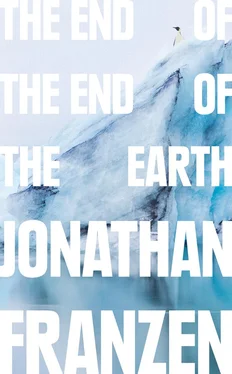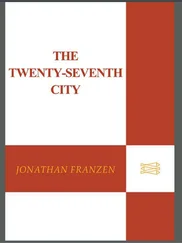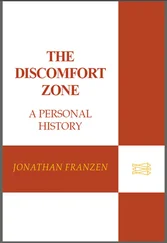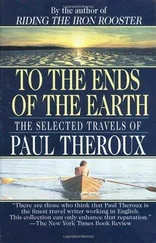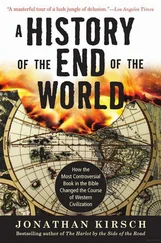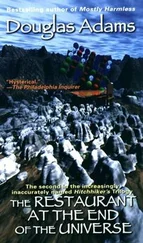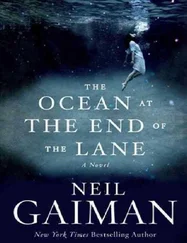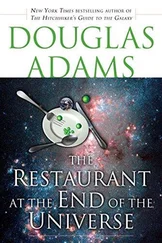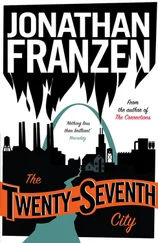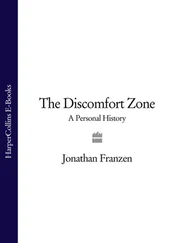I was in Santa Cruz, California, and already not in a good mood. The day I saw the Williams quote was the two hundred and fifty-fourth of a year in which, so far, sixteen had qualified as rainy. To the injury of a brutal drought came the daily insult of radio forecasters describing the weather as beautiful. It wasn’t that I didn’t share Williams’s anxiety about the future. What upset me was how a dire prophecy like Audubon’s could lead to indifference toward birds in the present.
Maybe it’s because I was raised as a Protestant and became an environmentalist, but I’ve long been struck by the spiritual kinship of environmentalism and New England Puritanism. Both belief systems are haunted by the feeling that simply to be human is to be guilty. In the case of environmentalism, the feeling is grounded in scientific fact. Whether it’s prehistoric North Americans hunting the mastodon to extinction, Maori wiping out the megafauna of New Zealand, or modern civilization deforesting the planet and emptying the oceans, human beings are universal killers of the natural world. And now climate change has given us an eschatology for reckoning with our guilt: coming soon, some hellishly overheated tomorrow, is Judgment Day. Unless we repent and mend our ways, we’ll all be sinners in the hands of an angry Earth.
I’m still susceptible to this sort of puritanism. Rarely do I board an airplane or drive to the grocery store without considering my carbon footprint and feeling guilty about it. 1But when I started watching birds, and worrying about their welfare, I became attracted to a countervailing strain of Christianity, inspired by St. Francis of Assisi’s example of loving what’s concrete and vulnerable and right in front of us. I gave my support to the focused work of the American Bird Conservancy and local Audubon societies. Even the most ominously degraded landscape could make me happy if it had birds in it.
And so I came to feel miserably conflicted about climate change. I accepted its supremacy as the environmental issue of our time, but I felt bullied by its dominance. Not only did it make every grocery-store run a guilt trip; it made me feel selfish for caring more about birds in the present than about people in the future. What were the eagles and the condors killed by wind turbines compared with the impact of rising sea levels on poor nations? What were the endemic cloud-forest birds of the Andes compared with the atmospheric benefits of Andean hydroelectric projects?
A hundred years ago, the National Audubon Society was an activist organization, campaigning against wanton bird slaughter and the harvesting of herons for their feathers, but its spirit has since become gentler. In recent decades, it’s been better known for its holiday cards and its plush-toy cardinals and bluebirds, which sing when you squeeze them, than for generating hard science, taking controversial positions, or partnering with groups that do real conservation work. When the organization shifted into apocalypse mode, last September, I wished that it had stuck with plush toys. Love is a better motivator than guilt.
In rolling out its climate-change initiative, Audubon alluded to the “citizen science data” it had mobilized, and to a “report,” prepared by its own scientists, that justified its dire predictions. Visitors to its updated website were treated to images of climate-imperiled species, such as the Bald Eagle, and asked to “take the pledge” to help save them. The actions that Audubon suggested to pledge-takers were gentle stuff—tell your stories, create a bird-friendly yard—but the website also offered a “Climate Action Pledge,” which was long and detailed and included things like replacing your incandescent lightbulbs with lower-wattage alternatives.
The climate-change report was not immediately available, but from the website’s graphics, which included range maps of various bird species, it was possible to deduce that the report’s method involved a comparison of a species’ present range with its predicted range in a climate-altered future. When there was broad overlap between the two ranges, it was assumed that the species would survive. When there was little or no overlap, it was assumed that the species would be caught between an old range that had grown inhospitable to it and a new range in which the habitat was wrong, and would be at risk of disappearing.
This kind of modeling can be useful, but it’s fraught with uncertainties. A species may currently breed in a habitat with a particular average temperature, but this doesn’t mean that it couldn’t tolerate a higher temperature, or that it couldn’t adapt to a slightly different habitat farther north, or that the more northerly habitat won’t change as temperatures rise. North American species in general, having contended with blazing July days and frosty September nights as they evolved, are much more tolerant of temperature fluctuations than tropical species are. Although, in any given place, some familiar back-yard birds may have disappeared by 2080, species from farther south are likely to have moved in to take their place. North America’s birdlife may well become more diverse, not less.
The Bald Eagle was an especially odd choice of poster bird for Audubon’s initiative. The species nearly became extinct fifty years ago, before DDT was banned. The only reason we can worry about its future today is that the public—led by the then energetic Audubon—rallied around an immediate threat to it. The eagle’s plight was a primary impetus for the Endangered Species Act of 1973, and the eagle is one of the act’s great success stories. Once its eggs were no longer weakened by DDT, its population and range expanded so dramatically that it was removed from the endangered-species list in 2007. The eagle rebounded because it’s a resilient and resourceful bird, a generalist hunter and scavenger, capable of traveling long distances to colonize new territory. It’s hard to think of a species less liable to be trapped by geography. Even if global warming squeezes it entirely out of its current summer and winter ranges, the melting of ice in Alaska and Canada may actually result in a larger new range.
But climate change is seductive to organizations that want to be taken seriously. Besides being a ready-made meme, it’s usefully imponderable: while peer-reviewed scientific estimates put the annual American death toll of birds from collisions and from outdoor cats at more than three billion, no individual bird death can be definitively attributed to climate change, still less to any climate action that an ordinary citizen did or didn’t take. (Local and short-term weather patterns are the chaotic product of a host of variables, and whether one person drives a Hummer or a Prius has nothing to do with them.) Although you could demonstrably save the lives of the birds now colliding with your windows or being killed by your cats, reducing your carbon footprint even to zero saves nothing. Declaring climate change bad for birds is therefore the opposite of controversial. To demand stricter review of wind farms, to make sure they’re not built directly in the path of millions of migrating birds, would alienate environmental groups that favor wind power at any cost. To take an aggressive stand against the overharvesting of horseshoe crabs (the real reason that the Red Knot, a shorebird, had to be put on the list of threatened U.S. species this winter) might embarrass the Obama administration, whose director of the Fish and Wildlife Service, in announcing the listing, laid the blame for the Red Knot’s decline primarily on “climate change,” a politically more palatable culprit. Climate change is everyone’s fault—in other words, no one’s. We can all feel good about deploring it.
There’s no doubt that the coming century will be a tough one for wild animals. Even if climate scientists are wrong, and global temperatures miraculously stabilize tomorrow, we would still be facing the largest extinction event in sixty-five million years. What remains of the natural world is rapidly being destroyed by our rising population, by deforestation and intensive agriculture, by depletion of fisheries and aquifers, by pesticide and plastic pollution, and by the spread of invasive species. For countless species, including almost all of North America’s birds, climate change is a more distant and secondary threat. The responses of birds to acute climatic stress are not well studied, but birds have been adapting to such stresses for tens of millions of years, and they’re surprising us all the time—Emperor Penguins relocating their breeding grounds as the Antarctic ice melts, Tundra Swans leaving the water and learning to glean grains from agricultural fields. Not every species will manage to adapt. But the larger and healthier and more diverse our bird populations, the greater the chances that many species will survive, even thrive. To prevent extinctions in the future, it’s not enough to curb our carbon emissions. We also have to keep a whole lot of wild birds alive right now . We need to combat the extinctions that are threatened in the present, work to reduce the many hazards that are decimating North American bird populations, and invest in large-scale, intelligently conceived conservation efforts, particularly those designed to allow for climate change. These aren’t the only things that people who care about nature should be doing. But it only makes sense not to do them if the problem of global warming demands the full resources of every single nature-loving group.
Читать дальше
